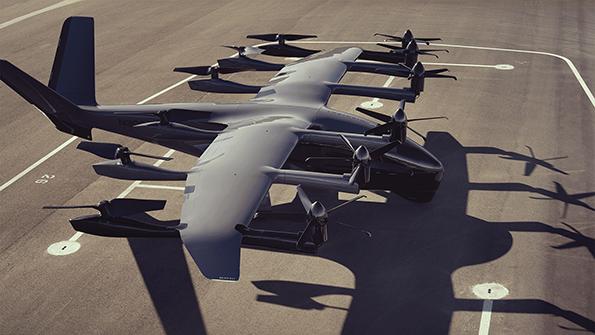Opinion: eVTOL Makers Should Focus On Business Case To Achieve Success

There are many electric vertical-takeoff-and-landing (eVTOL) aircraft makers developing vehicles that will go into low-volume production after 2025. Some approach it through vehicle design or pushing technology barriers, but most do not start with what could be the most discerning factor in the end.
The question that remains about all eVTOL companies is the viability of their business case.
The problem with design and advanced technology concepts taking priority over commercialization and industrial planning is the business case becomes a secondary motivation. But focusing on design or technology can become problematic for cash flow even during development, let alone profitability during production ramp-up.
Archer Aviation, a Silicon Valley-based eVTOL aircraft developer, has taken a different approach than most eVTOL companies, focusing on executing a more efficient path to commercialization. The business case has shaped the technology strategy. And while the first design of Archer’s Midnight aircraft may not be optimal for higher-rate production later, it is forecast to get to initial production completion by the end of 2023, flight testing in 2024 and entry into service by 2025.
Archer’s business case states that Midnight will be designed specifically for efficient certification by FAA. Supply chain partners are providing components using technologies that are already certified on aircraft today, allowing Archer’s in-house development to focus on key enabling technologies that cannot be sourced from the existing aerospace supply chain. Other eVTOL aircraft-makers are designing new systems that are not currently certified. In the end, the speed to genuine commercialization could be the most important factor.
To enable rapid commercialization, Archer addresses three key aspects in its industrial plan that could yield better business results faster: people, partnerships and production.
PEOPLE: Archer stresses bringing in the best talent from all manufacturing sectors. Archer COO Tom Muniz says workers have come from companies such as Airbus, Apple, Boeing, General Motors, Mazda and Tesla. Diversification outside of aerospace is important to implement design principles from the automotive sector that are focused on satisfying the business case, in particular higher production volumes.
PARTNERSHIPS: Archer has both automotive and aerospace partnerships. Stellantis is a leading Archer investor, but more importantly it is the third-largest auto OEM by revenue, producing more than 600,000 cars per month.
At the same time, many top-tier aerospace suppliers also are aligned for the design and vertical integration of certified systems, including Safran, Hexcel, FACC, Honeywell and Garmin. Each is familiar with aerospace’s bevy of manufacturing and flight certification requirements. Other eVTOL companies are internally developing and building proprietary noncertified systems, which have a high barrier of entry for FAA certification.
PRODUCTION: Midnight is one of the few eVTOL programs to break ground on a high-volume production facility or line to date. The Covington, Georgia, site should be completed in early 2024. It could be capable of making 650 aircraft per year with an additional buildout up to 2,300 aircraft annually.
The eVTOL industry is new, and so far there are no direct examples to compare it against. Insiders say some smaller aircraft have been produced at higher aerospace production volumes using similar materials and manufacturing methods that eVTOL companies are using as benchmarks.
Robinson Helicopters could be used for comparison, but they have large rotors and metal-based platforms. Technology, materials and production methods vary significantly from those of a composite-based eVTOL with a smaller powertrain and battery-powered rotors.
A closer example for material and manufacturing methods to compare eVTOLs against is the Cirrus SR Series, a lightweight aircraft produced from composite materials. From 1999 to 2016, about 3,000 units were delivered, with annual production in the 300s, 400s, and 500s in recent years.
There is some optimism around the eVTOL sector, but also much negative attention around cash burn, liquidity and the number of competitors. There are good reasons for reservations about the entire eVTOL sector. But those focused on commercialization with a strong industrial plan and a robust business case could find the catalysts to get them through the pre-production “valley of death.” An approach that prioritizes commercialization can help where design and technology do not.
Alex Krutz is managing director at Patriot Industrial Partners, an aerospace and defense advisory firm that focuses on manufacturing strategy and supply chain optimization.





Comments
Uber received $21 billion in various rounds of investor funding and has, wait for it, generated a loss of $36 billion over its entire existence. It has had only one profitable year (2018) and yet its stock trades in the mid-$40 range which values the company (market capitalization) at $94 billion.
So long as a company makes Wall Street money, it doesn't seem to matter whether it makes a profit. The same model may be in use for eVTOL. Whether this can be a successful long term model is extremely doubtful.